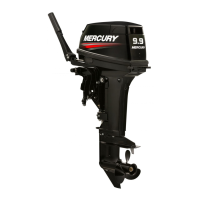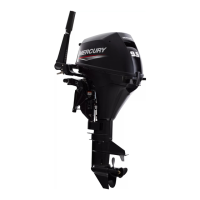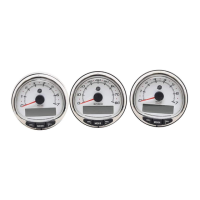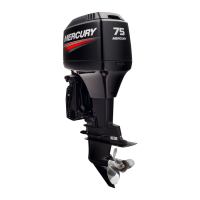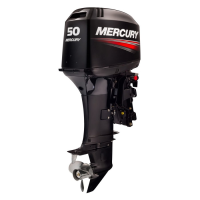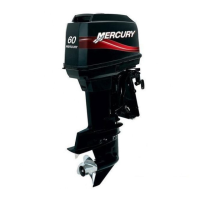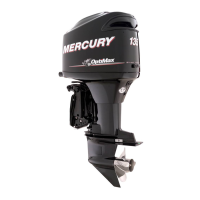90-830234R3 DECEMBER 19971C-6 - IMPORTANT INFORMATION NOVEM
Trim “In” Angle Adjustment
Some outboard boats, particularly some bass boats,
are built with a greater than normal transom angle
which will allow the outboard to be trimmed further
“in” or “under”. This greater trim “under” capability is
desirable to improve acceleration, reduce the angle
and time spent in a bow high boat, altitude during
planing off, and in some cases, may be necessary to
plane off a boat with aft live wells, given the variety of
available propellers and height range of engine in-
stallations.
However, once on plane, the engine should be
trimmed to a more intermediate position to a avoid a
bow-down planing condition called “plowing”. Plow-
ing can cause “bow steering” or “over steering” and
inefficiently consumes horsepower. In this condition,
if attempting a turn or encountering a diagonal, mod-
erate wake, a more abrupt turn than intended may re-
sult.
In rare circumstances, the owner may decide to limit
the trim in. This can be accomplished by reposition-
ing the tilt stop pins into whatever adjustment holes
in the transom brackets is desired.
WARNING
Avoid possible serious injury or death. Adjust
outboard to an intermediate trim position as
soon as boat is on plane to avoid possible ejec-
tion due to boat spin-out. Do not attempt to turn
boat when on plane if outboard is trimmed ex-
tremely in or down and there is a pull on the steer-
ing wheel or tiller handle.
a
a - Stainless Steel Tilt Pin (P/N 17-49930A1)
Compression Check
1. Remove spark plugs.
2. Install compression gauge in spark plug hole.
3. Hold throttle plate at W.O.T.
4. Crank the engine over until the compression
reading peaks on the gauge. Record the reading.
5. Check and record compression of each cylinder.
The highest and lowest reading recorded should
not differ by more than 15% (see example chart
below). A reading below 120 psi might indicate a
total engine wear problem.
Example of compression test differences
Maximum (psi)
Minimum (psi)
180 162
150 127.5
6. Compression check is important because an
engine with low or uneven compression cannot
be tuned successfully to give peak performance.
It is essential, therefore, that improper compres-
sion be corrected before proceeding with an
engine tuneup.
7. Cylinder scoring: If powerhead shows any indica-
tion of overheating, such as discolored or
scorched paint, visually inspect cylinders for
scoring or other damage as outlined in Section 4
“Powerhead.”

